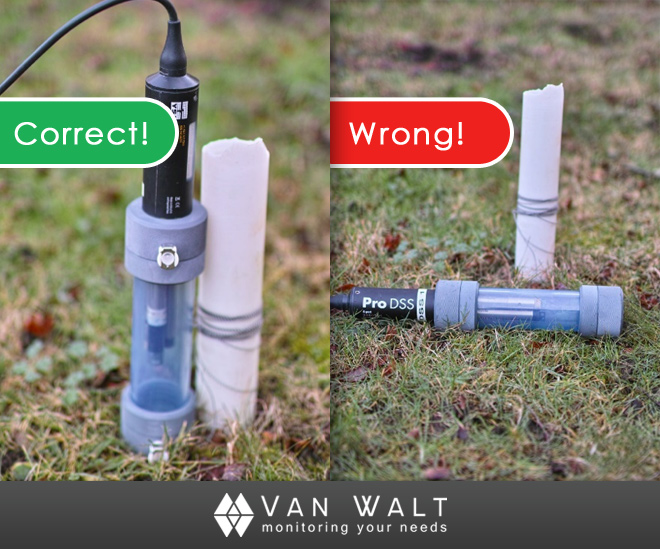

Accurate Water Quality Measurements with a Flow Cell

January 28, 2016
To ensure your water quality measurements are accurate when using a YSI Pro Plus, ProDSS or EXO and flow cell, the flow cell should always be upright. This is not always easy to achieve as the flow cell, particularly the Xylem flow cell, as shown above, is rather narrow and therefore unstable in the field.
However, using the flow cell lying down when taking water quality measurements is incorrect as air will come into contact with the electrodes and your results will be inaccurate.
The solution is not high-tech! Resting the flow cell against an object or even standing it up inside the Pelicase (when it is not raining) is perfectly satisfactory or there is a spike option available from Xylem through us. The disadvantage of the spike is that it is not much use on hard grounds.
Having recognised the problem, we are working to provide a base plate for the flow cell and that should soon be available and will be included with all rental units. We have updated our Quick Start Guides to make it clear on how to obtain the most accurate results.
For more information on our range of water quality measuring and monitoring instruments for rent or to buy click here. For resources on how to get the most from this equipment our Resources Pages contain a lot of useful information, including films and technical updates.
You might also be interested in...
Van Walt Guidelines for sampling for PFAS in Groundwater
November 13, 2024We need to make clear, that at the time of writing, there are no ISO or EN standards which deal with the sampling of groundwater for PFAS.
Read MoreSpot measurement v. continuous environmental monitoring
August 25, 2023Environmental monitoring has developed considerably over the years. From the time when a consultant went out monthly or quarterly with a dip tape to monitor the groundwater level in a borehole, wind forward...
Read MoreMeasuring Nitrates (NO3, NO3-N) in the field
June 20, 2023The interest in Nitrates is nothing new. One way or another we have been measuring them for half a century.
Read MoreVan Walt Environmental Equipment
A small selection of our environmental equipment